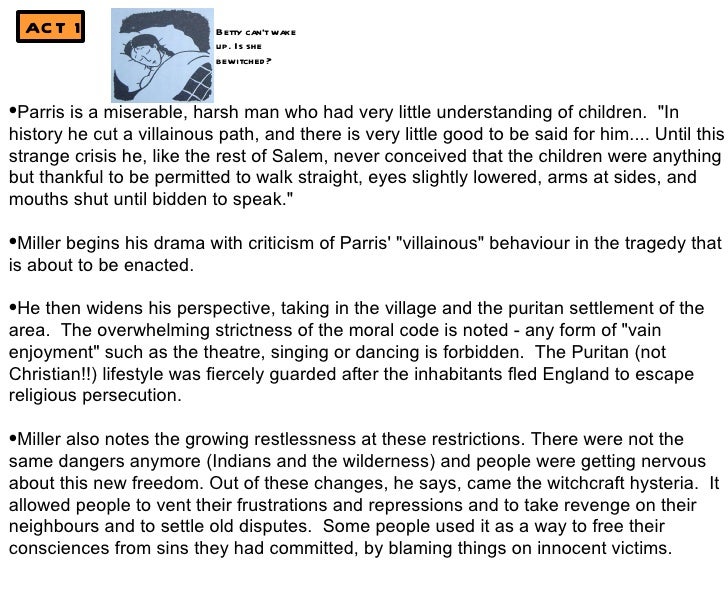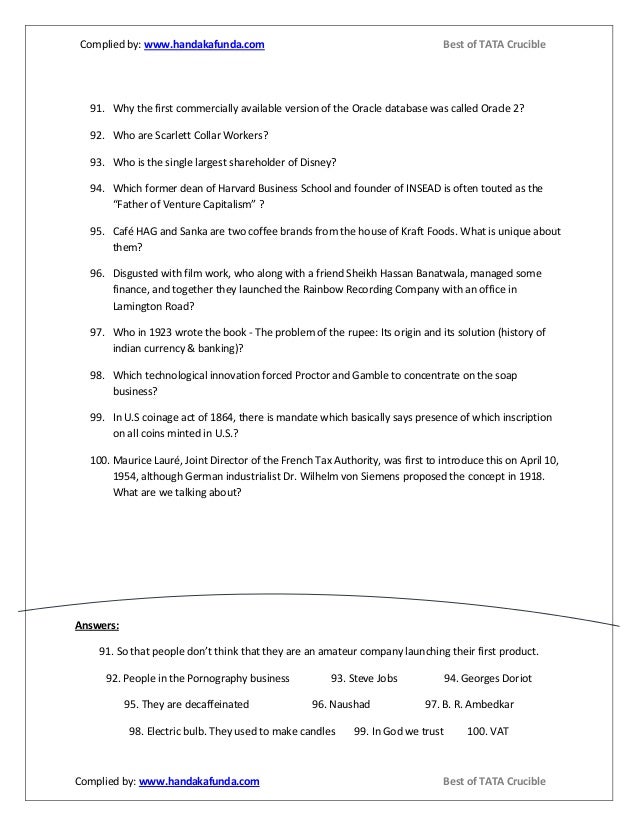Study Guide Answers To The Crucible
- Act 3 Study Guide Answers The Crucible
- Study Guide Answers To Heart Of Darkness
- Study Guide Answers To The Crucible

Act 3 Study Guide Answers The Crucible

Act One First, we'll split our questions for Act One of the The Crucible into two groups. The first group consists of factual recall questions. These questions could be used to check your students' understanding of the characters, plot, and conflicts of the play.
The second group requires higher order thinking and would best be used to start a class discussion, drive a small group debate, or serve as essay questions on an assessment. Factual Recall Questions. What is the setting of the play? Cover location, time period, and the culture. As the play opens, what is the problem with Betty Parris?.
Study Guide Answers To Heart Of Darkness
Who is Tituba? What is her role in the Parris household?. Why did Reverend Parris ask John Hale to come to Salem?. What disturbing scene did Reverend Parris witness in the woods?.
When Abigail is confronted about what happened in the woods, what is her version of events? Putnam spreads a rumor about Betty. What fantastic act does she claim Betty performed?. What were the girls really doing in the woods?.
What kind of person is John Proctor?. How does John Proctor treat his servant Mary Warren?. Explain the relationship between John Proctor and Abigail. What is Rebecca Nurse's reputation in Salem? What does she believe is the cause of the girls' strange condition?. What is the reason John Proctor gives for not attending church regularly?. Describe Reverend Hale's personality and reputation.
What does Tituba confess when she is confronted by Abigail and Reverend Hale?. What are Abigail, Betty, and Tituba doing as the act ends?
Higher Order Questions. Reverend Parris and Thomas Putnam both have afflicted daughters at the beginning of the play. Both say they're worried about the health of their daughters, but they really have larger concerns on their minds. Cite quotes from Act One that show that Parris and Putnam are worried about other issues more than about their daughters.
How do these other concerns affect the way they're seen by the audience?. A literary motif is an idea that keeps appearing throughout a work of literature.
One motif of this play is revenge. How does this motif appear in Act One?. Formulate an argument either for or against this statement: Thomas Putnam believes in the power of witchcraft. The Crucible is a play about power. Who has power in this community and who lacks power?.
Why does Parris put such an emphasis on sin and damnation in his sermons?. Make a list of the main characters in this act, then rank them from most sympathetic to least sympathetic. Explain your list.
What qualities help characters rise on your list, and what characteristics cause them to fall to the bottom? Theorize as to what you think the author hopes to achieve by making these characters likable or not.
A number of characters are revealed to be harboring personal grudges. Which characters hold grudges, and what is the basis for their bad feelings?. Giles Cory asks Reverend Hale about the strange books his wife reads. What does this scene foreshadow?. How do the accusations shift the balance of power in Salem?
Arthur Miller was born to middle-class parents in 1915 in New York City. Miller was unintellectual as a boy, but decided to become a writer and attended the University of Michigan to study journalism. There, he received awards for his playwriting. His first play, The Man Who Had All the Luck opened in 1944.
Miller had his first real success with (1947). (1949) made Miller a star.
Study Guide Answers To The Crucible
The Crucible opened in 1952, and was considered an attack on the anti-Communist McCarthyism then raging in the United States. Miller himself was brought before Congress in 1956 and convicted of contempt of Congress for refusing to cooperate. The conviction was eventually overturned.
The Crucible is a fictionalized account of the Salem Witch trials of 1692, in which 19 innocent men and women were killed by hanging and hundreds convicted before the panic subsided. Yet while The Crucible depicts one witch-hunt, it was written during another. In the 1950s, during the first years of the Cold War, a Senator named Joseph McCarthy rose to power by whipping the nation into a terror of Communists. McCarthy led the House Committee on Un-American Activities, which sought to find Communists in America. Those named as Communists were placed on 'Blacklists' that prevented them from getting work. Eventually the fervor died down and McCarthy was censured, but not before the lives of hundreds of people, particularly those in entertainment industries, were destroyed. Key Facts about The Crucible.
Full Title: The Crucible. When Written: 1950-52. When Published: 1953. Literary Period: Realist Drama.
Genre: Tragic Drama. Setting: Salem, Massachusetts in 1692, when it was a Puritan colony.
Climax: The Crucible has an odd structure, in which each of the four acts ends on a climax. Act I: the girls scream out the names of witches.
Act II: Proctor vows he will confront Abigail. Act III: Proctor reveals his adultery with Abigail, and Elizabeth Proctor lies. Act IV: Proctor rips up his confession. Antagonist: Abigail Williams.

The Real Salem Witch Trials. In his depiction of the witch trials, Miller took many major departures from fact. For instance, John Proctor was nearly 60 and Abigail Williams only 11 at the time of the witch trials. Any affair between the two is highly unlikely, to say the least. Miller was always open about the liberties he took with history, saying that he was writing 'a fictional story about an important theme.' Some Like it Hot. Arthur Miller was not a star the way writers are stars today.
He was much, much bigger than that. After he wrote, he was a tremendous national sensation. In fact, he was such a big star that he married Marilyn Monroe. The couple married in 1956, and stayed together until 1961.